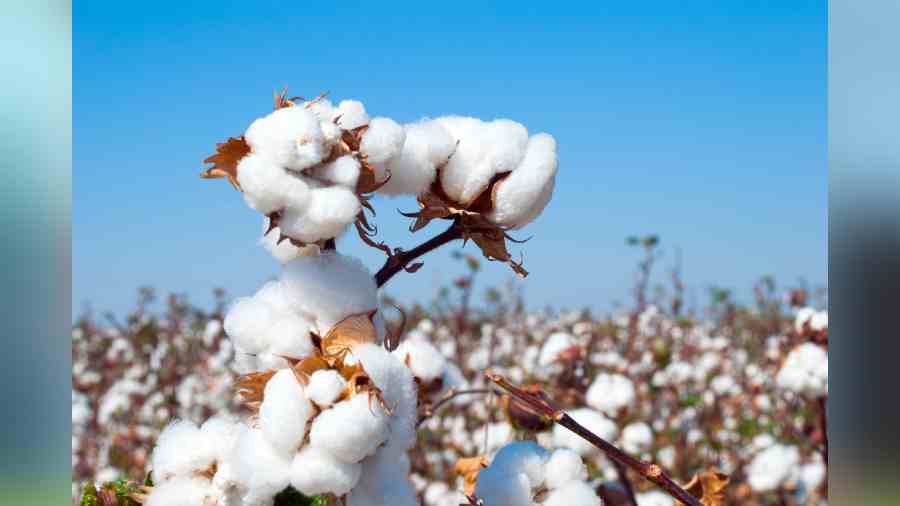Demand for sustainable or organic cotton on the rise, providing an opportunity for the country to excel
A few years ago, images of the drying up of the eastern bed of the Aral Sea had shocked millions. It was linked to the widespread growing of unsustainable cotton, backed by the Uzbekistan government, to pocket greater forex earnings and satiate the demands of the global fashion industry. The demand for sustainable or organic cotton is increasing to prevent such disasters.
A silent revolution was first effected through the market-based sustainability certification standard. These global standards aimed at overcoming the use of toxic pesticides, the overuse of chemical fertilisers, excessive water use, poor working conditions for agricultural labour, frequent instances of child labour and so on. As a result, over the last decade, the share of sustainable cotton has increased from 1% in 2009 to 26% in 2019-20.
India is the world’s second-largest producer of cotton. The textile industry, dominated by cotton fibre, accounts for nearly 60% of the total manufacturing and more than 2% of India’s GDP. The sector is a significant forex earner, accounting for 40 billion USD, equivalent to 12% of the total exports of the country. India has set an ambitious target of 100 billion USD for cotton and textile exports by 2025-26. This will require enhanced integration of India’s cotton sector into global supply chains. India is an important sourcing country for major apparel and home furnishing global retailers. Furthermore, traditional supply chains have come under the scanner of global buyers due to sustainability concerns. If India accelerates adoption and implementation of MSCS cotton, its true potential in the sector can be realised sooner rather than later.
MSCS cotton has demonstrated significant environmental and economic benefits. The Result Indicator report published by Better Cotton Initiative indicated a 9% improvement in yield and 23% increase in profitability among cotton farmers. It has also seen a 10% reduction in water use for irrigation, 15% reduction in the use of chemical fertilisers and 19% for pesticides. According to a WWF India 2020 report, the reduction of greenhouse gas emissions ranged between 43% and 66% across various MSCS. Moreover, MSCS’ cotton growth is aligned with the Indian government’s development paradigm, which prioritises sustainable agriculture, as well as with India’s commitment to the United Nations’ Sustainable Development Goals.
A favourable environment is already being created through massive promotion by the Niti Aayog pouring government investment in natural farming through the repurposing of the National Centre for Organic and Natural Farming, which promotes organic and natural farming. This behemoth could be used tactically to integrate MSCS. Lessons can be learnt from myBMP cotton in Australia, the Trust US Cotton Protocol, and the Cotton Value Revitalization Plan in Mozambique where nationally driven sustainability initiatives are integrated with the global cotton sustainability space. Similarly, the Participatory Guarantee Scheme, a locally-led quality assurance under the NCONF, can be aligned with MSCS’ requirements.
The government should create an enabling environment for digital innovation and provide necessary infrastructure support in order to modernise the agriculture extension system, contribute to the production of sustainable cotton, and create a platform for buyer and seller interaction. Collaboration among the government, private sector, and MSCS organisations is essential along with industry consultations, trade policy reforms, strategic investment in technology and the identification of conducive geopolitical opportunities.
Source: The Telegraph online

